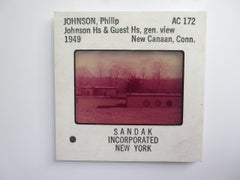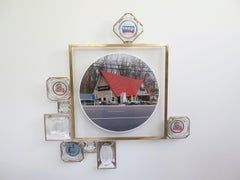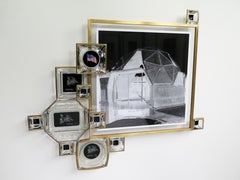ODETTA Landscape Photography
2010s Dada Still-life Sculptures
Photographic Film, Film, Archival Paper, Digital, Wood
2010s Assemblage Still-life Sculptures
Metal
2010s Assemblage Still-life Sculptures
Metal
2010s Assemblage Still-life Sculptures
Metal
2010s Assemblage Still-life Sculptures
Metal
2010s Assemblage Still-life Sculptures
Metal
2010s Assemblage Still-life Sculptures
Metal
2010s Street Art Color Photography
Archival Paper, Photographic Paper, C Print, Color, Lambda
2010s Street Art Color Photography
Archival Paper, Photographic Paper, C Print, Color, Lambda
2010s Street Art Color Photography
Archival Paper, Photographic Paper, C Print, Color, Lambda
2010s Street Art Color Photography
Archival Paper, Photographic Paper, C Print, Color, Lambda
2010s Street Art Color Photography
Archival Paper, Photographic Paper, C Print, Color, Lambda
2010s Street Art Color Photography
Archival Paper, Photographic Paper, C Print, Color, Lambda
2010s Street Art Color Photography
Archival Paper, Photographic Paper, C Print, Color, Lambda
2010s Street Art Color Photography
Archival Paper, Photographic Paper, C Print, Color, Lambda
2010s Street Art Color Photography
Archival Paper, Photographic Paper, C Print, Color, Lambda
2010s Street Art Color Photography
Archival Paper, Photographic Paper, C Print, Color, Lambda
2010s Street Art Color Photography
Archival Paper, Photographic Paper, C Print, Color, Lambda
2010s Street Art Color Photography
Archival Paper, Photographic Paper, C Print, Color, Lambda
2010s Street Art Color Photography
Archival Paper, Photographic Paper, C Print, Color, Lambda
2010s Street Art Color Photography
Archival Paper, Photographic Paper, C Print, Color, Lambda
2010s Street Art Color Photography
Archival Paper, Photographic Paper, C Print, Color, Lambda
2010s Street Art Color Photography
Archival Paper, Photographic Paper, C Print, Color, Lambda
2010s Street Art Color Photography
Archival Paper, Photographic Paper, C Print, Color, Lambda
2010s Abstract Impressionist Landscape Photography
Mixed Media, Encaustic, Digital, Monotype, Watercolor, Panel
2010s Abstract Impressionist Landscape Photography
Mixed Media, Encaustic, Digital, Monotype
2010s Abstract Impressionist Landscape Photography
Mixed Media, Encaustic, Panel, Digital, Monotype, Thread, Wood
2010s Abstract Impressionist Landscape Photography
Mixed Media, Encaustic, Panel, Digital, Monotype
2010s Abstract Impressionist Landscape Photography
Mixed Media, Encaustic, Digital, Panel, Monotype
2010s Abstract Impressionist Landscape Photography
Mixed Media, Encaustic, Digital
2010s Abstract Impressionist Landscape Photography
Mixed Media, Encaustic, Digital
2010s Abstract Impressionist Landscape Photography
Mixed Media, Encaustic, Digital
21st Century and Contemporary Minimalist Landscape Photography
Plastic, Plywood, Video
2010s New Media More Art
Video
2010s Conceptual Landscape Photography
Digital Pigment, Video
2010s Conceptual Landscape Photography
Digital Pigment, Video



